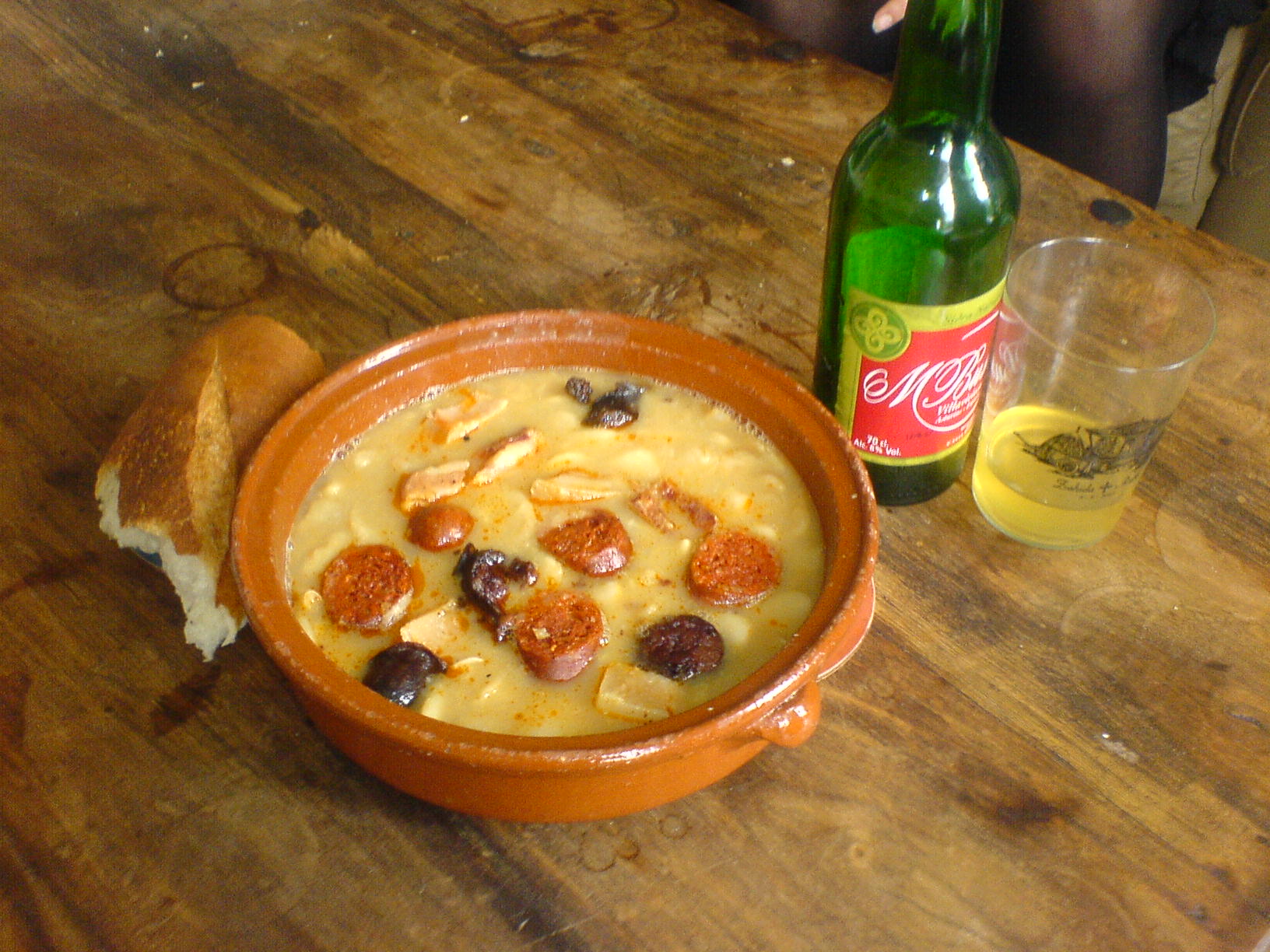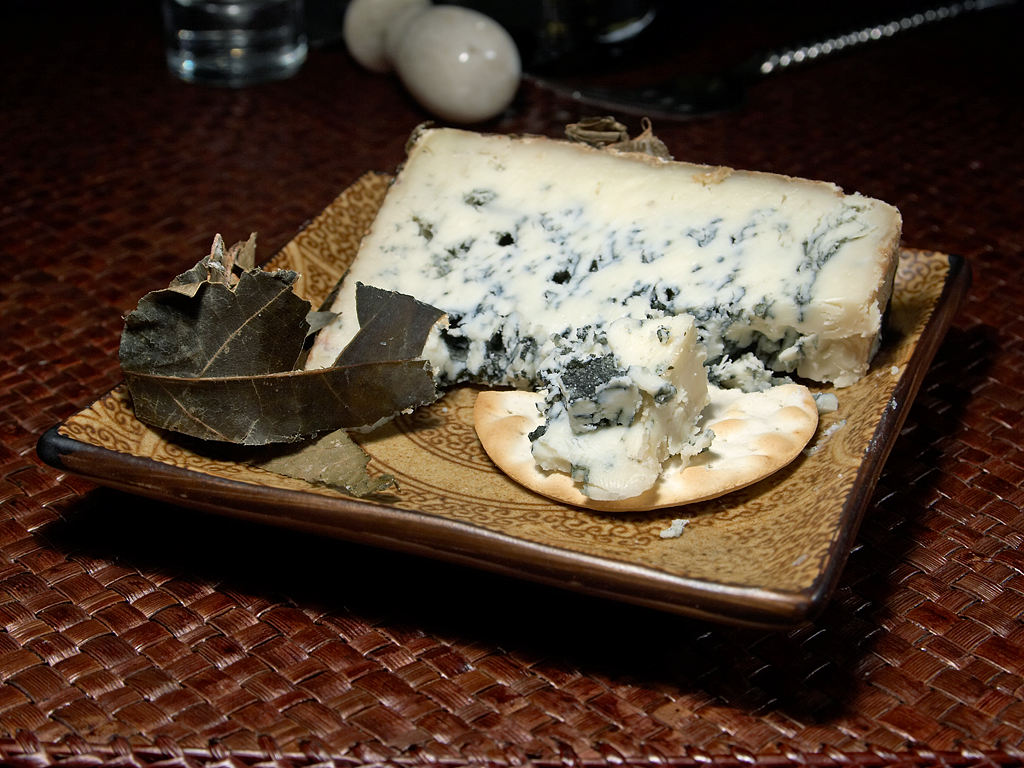Oviedo Guide
Asturian food and drink to try while in Oviedo
Asturian cuisine reflects the region’s rural roots and close connection to the sea, featuring hearty stews, fresh seafood, and distinctive cheeses. Here’s a closer look at the typical food and drink that define Oviedo and Asturias.
Regional specialities
1. Carbayones – A Sweet Symbol of the City
If there is one food truly specific to Oviedo, it is the carbayón. This sweet pastry is a proud emblem of the city — even its name is a nod to Oviedo’s nickname, derived from an old oak tree (carbayu) that once stood in the city centre. The carbayón is an elongated puff pastry filled with a rich almond and egg yolk cream, topped with a glaze of sugar and lemon. It’s decadent, moreish and utterly Oviedan. You’ll find the best ones in historic pastelerías such as Camilo de Blas, where the recipe has remained unchanged for generations.
2. Cachopo
One of the most beloved dishes in Oviedo, cachopo is a hearty indulgence that will leave any visitor satisfied. This dish features two large pieces of beef, typically filled with cheese and ham, then breaded and fried to perfection. It is often served with fries or a fresh salad. While it may not be as famous as Spain’s iconic paella, cachopo has earned its place as an Asturian classic. Variations exist, with some recipes featuring fish or even stuffed with a range of vegetables, but the traditional beef version is the most common.
3. Fabada Asturiana

No discussion of Asturian cuisine would be complete without mentioning fabada, the region’s signature dish. This rich and filling bean stew is made from large white beans, known as fabes, which are slow-cooked with chorizo, morcilla (blood sausage), and pork shoulder. The dish is perfect for the region’s often chilly climate and is a favourite during the colder months. Fabada is usually enjoyed with a slice of crusty bread and is a central part of family gatherings or special occasions.
4. Arroz con Leche
Asturias has a strong tradition of dairy farming, and it is no surprise that its desserts reflect this. Arroz con leche, or rice pudding, is a comforting dish made from rice, milk, sugar, and cinnamon. It’s creamy, slightly sweet, and often served chilled, making it a popular dessert throughout Asturias. The addition of lemon peel and a dusting of cinnamon on top adds to its distinctive flavour, making it a favourite after a hearty meal.
5. Chosco de Tineo
This local speciality is a type of smoked sausage made from pork, typically enjoyed as part of a larger spread of charcuterie or served with bread. The sausage is flavoured with paprika, garlic, and other spices before being cured and smoked, resulting in a strong, savoury taste. It is often paired with cider or Asturian cheeses, adding a rustic touch to any meal.
Asturian Drinks
1. Sidra (Cider)
Perhaps the most famous drink in Asturias, and certainly a signature of Oviedo, is sidra (cider). Unlike the sweet ciders found in other parts of the world, Asturian sidra is typically dry and has a slightly sour taste. The most unique aspect of sidra is the way it is poured. To serve it, the cider is held high above the glass and poured from a great height, allowing the drink to aerate and release its full flavours. This traditional pouring technique is part of the sidra experience in Oviedo and is often performed in cider houses, known as sidrerías, where patrons can enjoy their cider alongside traditional Asturian dishes.
2. Cerveza (Beer)
Although cider reigns supreme in Asturias, beer is also a popular drink in Oviedo. Local breweries produce a range of beers, from light lagers to darker, more robust ales. Many establishments serve local beers alongside tapas or light bites, making beer an excellent choice for a casual afternoon or evening out.
3. Licor de Orujo
For those with a penchant for strong spirits, licor de orujo is a traditional Asturian after-dinner drink that should not be missed. Made from the pomace (the leftover fruit skins and pulp) of grapes, orujo is a type of pomace brandy. It is often flavoured with herbs or other botanicals and has a strong, distinctive flavour. The drink is typically served in small quantities as a digestif and is a great way to end a meal on a warm note.
Cheeses of Asturias
Asturias is home to an impressive selection of cheeses, many of which are produced locally in the mountains and valleys that surround Oviedo. These cheeses are often paired with cider and other local dishes, showcasing the region’s rich dairy tradition.
1. Cabrales

Perhaps the most famous of Asturian cheeses, Cabrales is a blue cheese made from cow’s, goat’s, and sheep’s milk. It is produced in the Picos de Europa mountains and is aged in natural caves, giving it a distinct, strong flavour. The creamy texture and sharp tang of Cabrales make it a perfect accompaniment to cider or even a slice of fresh bread.
2. Afuega’l Pitu
This cheese, made primarily from cow’s milk, is one of the oldest varieties in Asturias. Its name, which translates to “the suffocating chicken,” refers to the strong, spicy flavour of the cheese, which can range from mild to very intense. It is typically served in wedges or slices and is often used in various Asturian dishes.
3. Queso de La Peral
Another renowned cheese from the region, Queso de La Peral is a semi-cured blue cheese with a creamy texture. It has a milder flavour compared to Cabrales but still carries the characteristic tang of a blue cheese. The cheese is often served as part of a cheese board or enjoyed alongside a glass of sidra.
Related articles

Getting around in Oviedo on public transport
Oviedo’s primary mode of public transport is its extensive bus network, operated by the Transportes Municipales de Oviedo (TUA). The

Day trips from the city of Oviedo
Explore Asturias from the city of Oviedo and discover more of this unspoilt region of northern Spain.

Top 10 things to see and do in Oviedo
Oviedo, capital of Asturias is a city full of charm, culture, and history with a beautifully preserved old town, unique
